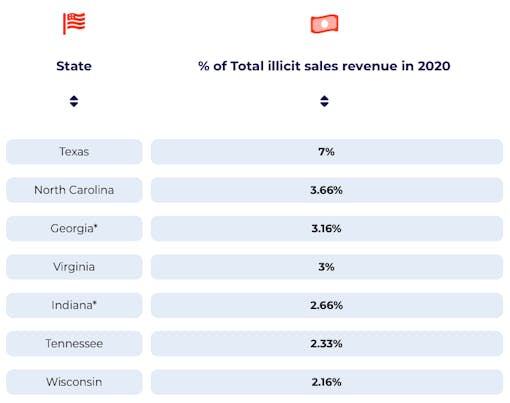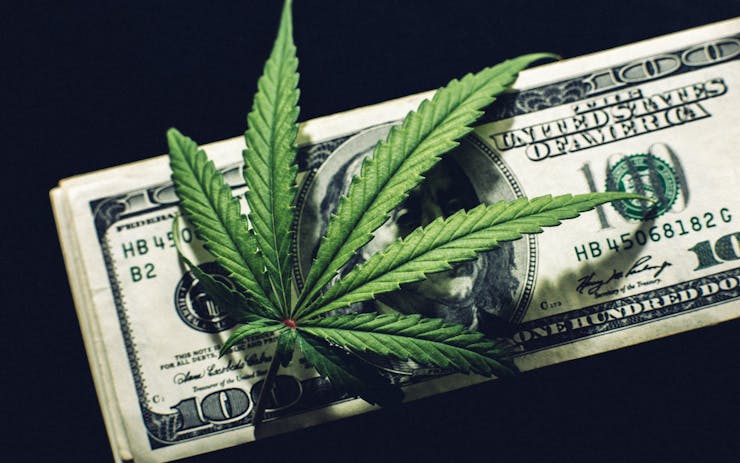Studies estimate that between 12% to 14% of adult Americans enjoy cannabis. That’s a massive group of consumers—and they spend billions of dollars every year on marijuana. Unfortunately, according to a new report, more than 71% of that spending goes to the illicit market, due to various forms of cannabis prohibition enforced in 39 states.
A new report by the website GrowCola, using data from New Frontier Data’s U.S. Cannabis Report, notes that the American illicit market encompasses roughly $60 billion in annual sales. That compares to around $23 billion in legal medical and adult-use cannabis sales. (State-legal cannabis sales figures are often disputed, as there is no government tally of the federally-prohibited products. Leafly’s 2020 jobs report estimated the size of the legal American cannabis market at around $14 billion.)

View full data here
Source: GrowCola via New Frontier Data. Note: Washington D.C. is counted as a state in the above graphic.
That’s a lot of illicit weed, Texas
Texas leads all non-legal states in its purchases. The report estimates that the Lone Star State accounts for 7% of all illicit cannabis sales in the United States. That’s roughly $4.2 billion, or more than three times the size of Colorado’s legal market.
Next on the list: North Carolina, Georgia, Virginia, and Indiana, which each account for roughly 3% of the nation’s illicit sales.

600,000 jobs and $6 billion in tax revenue foregone
If the illicit market is about 2.5 times the state-legal market, as the GrowCola/New Frontier data suggests, America is missing out on hundreds of thousands of legal jobs and billions of dollars in tax revenue.
Today’s $14 to $23 billion legal cannabis market supports 243,700 full-time American jobs. Doing the math, a fully captured illicit market would add more than 600,000 full-time jobs to the national economy.
At a relatively conservative 10% tax rate, capturing $60 billion in sales would yield $6 billion in cannabis tax revenue every single year. That’s as much as New Hampshire’s entire annual state budget.






